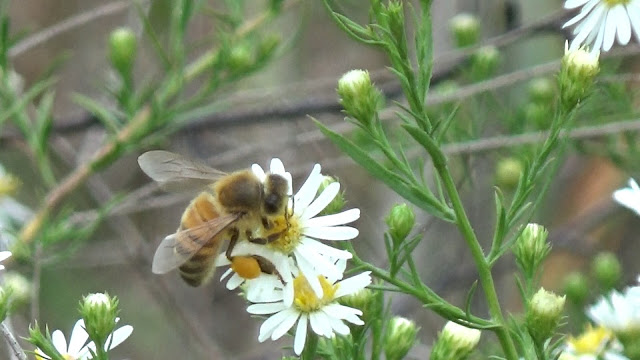Common Eastern Bumblebees (Bombus impatiens) are the last bumblebees still flying in the fall, while Hairy Asters (Symphyotrichum pilosum) are among the last wildflowers to bloom.
Here the two find each other in our backyard:
Two-spotted Bumblebees (Bombus bimaculatus) were the first bumblebees we saw this season (they were on the Foxglove Penstemon blooming in the spring). The Common Eastern Bumblebees (Bombus impatiens) were the last, coming to the asters for nectar and pollen.
Bumblebees are the most important pollinators.
Honeybees are not native to the US, but many have escaped from managed hives and now make up part of the wild population. Here is a feral Western Honeybee visiting Hairy Asters in our Creek Field in late September 2021. Note the yellow pollen ball on her leg:
Here is that bee in action, joined by a sister:
Here is another worker-bee carrying a pollen ball on her leg as she visits volunteer Hairy Asters in our backyard (October 6, 2021):
European honeybees have been known to push out our native bees. But from what I've seen, when it comes to Hairy Asters, there's more than enough for everyone.

No comments:
Post a Comment